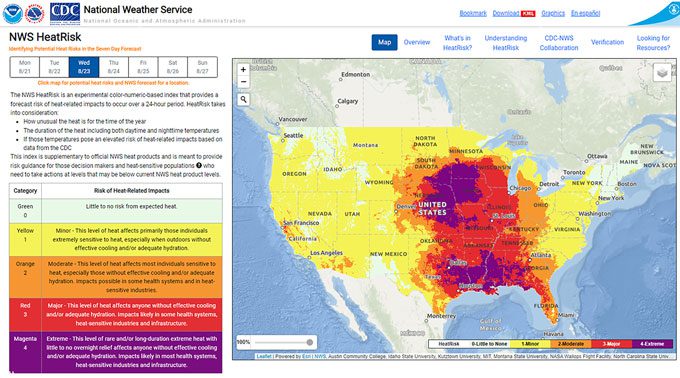Summer is on its way. After last year’s unusually hot and fatal temperatures, predictions indicate that higher-than-normal summer temperatures are expected to affect most of the United States (SN: 12/6/23). However, one thing will be different this time: A new web-based tool will illustrate and evaluate the threat to health caused by heat using a five-level color system.
“You can enter your zip code to view current heat risk and air quality levels, as well as a seven-day heat risk forecast for your area,” Mandy Cohen, director of the Centers for Disease Control and Prevention said April 22 at a news conference introducing the tool, named HeatRisk. “So, you can plan your day and you can plan your week with your health in mind.”
On average, extreme heat claims over 1,200 lives in the United States each year, as estimated by the CDC. That’s “more than hurricanes, floods and tornadoes combined,” said Rick Spinrad, head of the National Oceanic and Atmospheric Administration. Additionally, heat-related sicknesses are even more widespread, resulting in nearly 120,000 emergency visits last year (SN: 9/6/23).

Using temperature forecasts from NOAA’s National Weather Service and heat and health data from the CDC, HeatRisk shows where rising temperatures are likely to increase heat-related health impacts. It rates risk with a color-oriented index — from light green for no risk to deep magenta for extreme risk — based on several factors: how unusual temperatures are for the time of year, the duration of the unusual heat, whether nights will offer cool reprieve and whether temperatures will be hot enough to affect health. Users can zoom into the color-coded map and find local heat forecasts for the week. Another part of the site provides advice on how to recognize indications of heat-related illness and how to stay safe. A Spanish-language version is also available.
“When it comes to heat, it’s never too early to prepare,” Spinrad said.



